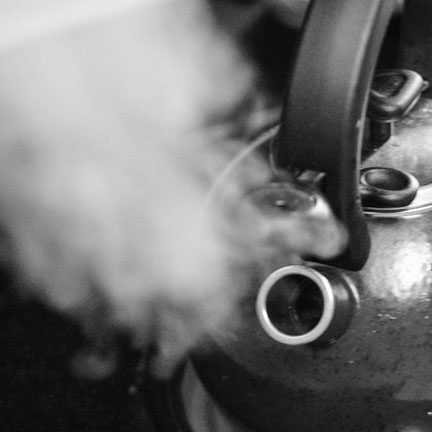
A kettle boils at 100 degrees. So do we. But not on the same scale.
When someone says, “It is 100 Degrees out there,” they definitely mean it is hot but they are probably measuring the temperature in degrees Fahrenheit. That’s how it used to be done in Manitoba and in Canada.
Dickies From Gunton: Canadian Brothers in Two World Wars would have found it strange instead to say, “It’s 37 C.” They were not familiar with the metric system. To them, 37 degrees was not warm. It was close to freezing as water freezes at 32 F (0 C). And of course, they knew that water boils at 212 F, much hotter than the ambient temperature will ever get. Yet water also boils at 100 C. So go figure.
For them, gasoline was sold by the gallon. They measured their speed in miles per hour. They determined their height in feet and inches and their weight in pounds and ounces. They measured land in acres. A school ruler was marked in inches.
Then Canada chose to adopt the “global metric system”. A Canadian government white paper said the adoption was “ultimately inevitable and desirable for Canada”. Metrification, or the move from using the Imperial (inch-pound) system to the metric system (SI or Systeme Internationale) was made because most of Canada’s trading partners use the metric system. Converting pounds to bushels and bushels to metric tons was extra paperwork and cost money, according to a Winnipeg Tribune article on March 23, 1974. Canada was following England, and the US was lagging behind on the conversion which was compared to learning another language.
Ordinary Canadians were told how their lives would change. Temperatures, cookbook ingredient measurements, speed limits on the highways, and a fourth down in Canadian football would be among the changes. There would be some costs but it would be better and progress demanded it. The new system would be easier for students. Measurements would be easily divisible by 10, 100 or 1,000. There would be no need to know how many ounces in a pound, how many cups in a pint, how many feet in a yard, how many yards in a mile…
But at the time, people knew these things. They knew the imperial system. Many were not eager to see this change touted as progress.
By the late 1980s, many of the changes had come. Students now learn metric at school, and many don’t even realize Canada once used anything else. Speed is now measured in kilometres per hour. Gas is sold in litres.
Yet the echoes of the old system remain in many places. We still use some of the old imperial measurements. We might measure our height or the height of our children in feet and inches, and our weight in pounds and ounces rather than thinking metric and using metres and kilograms. We might still buy a pound of hamburger and measure a cup of rice.
And when we take a drive into the United States, we might remember how we once also measured our own speed in mph, bought gas by the gallon, and accurately said, “It is 100 degrees!”